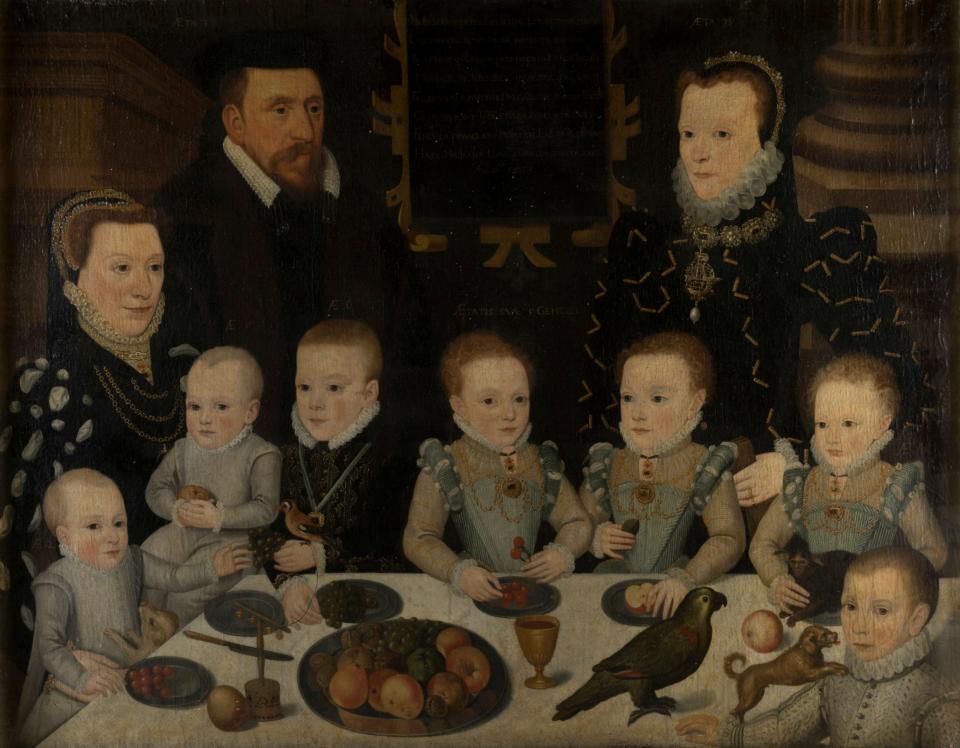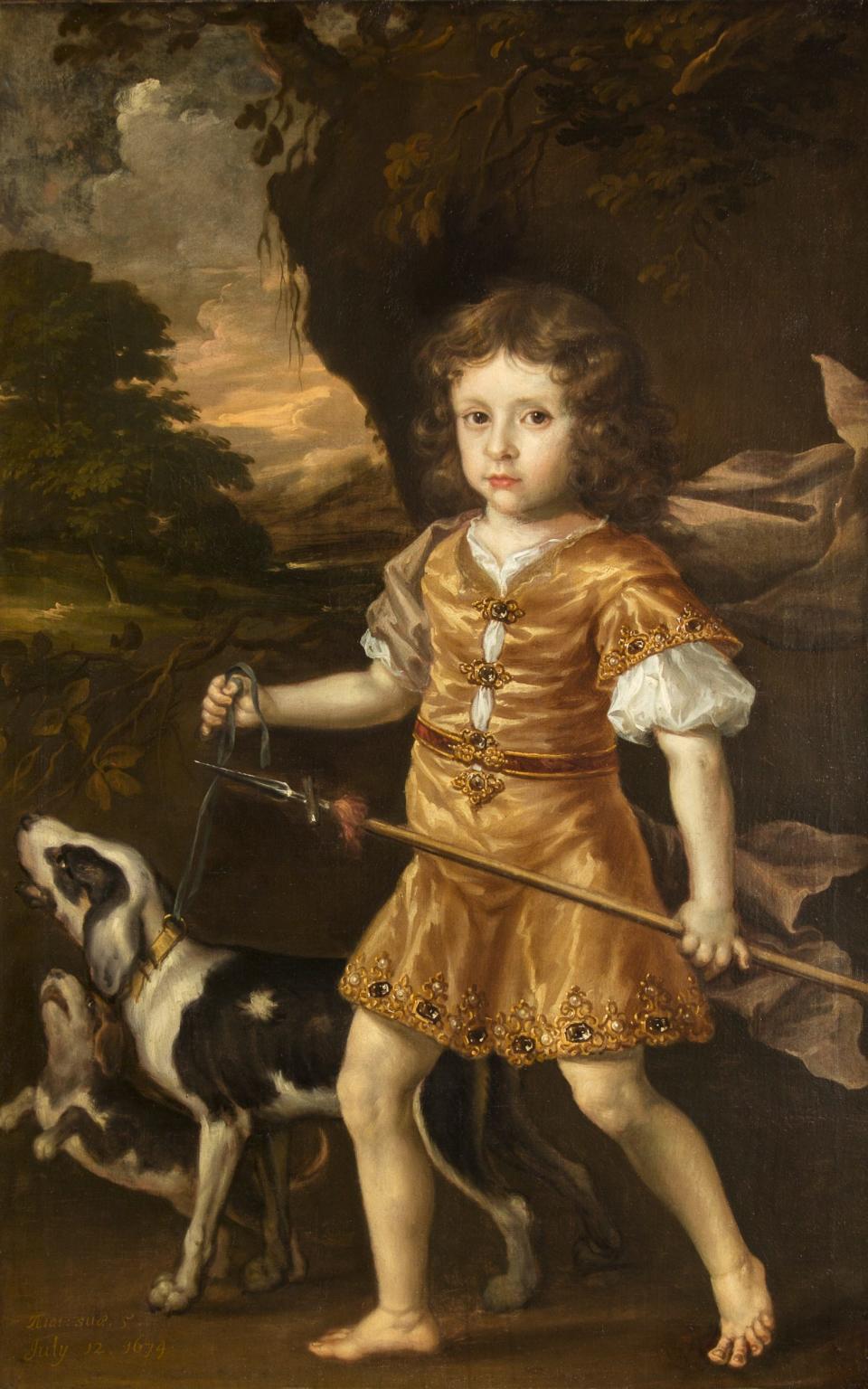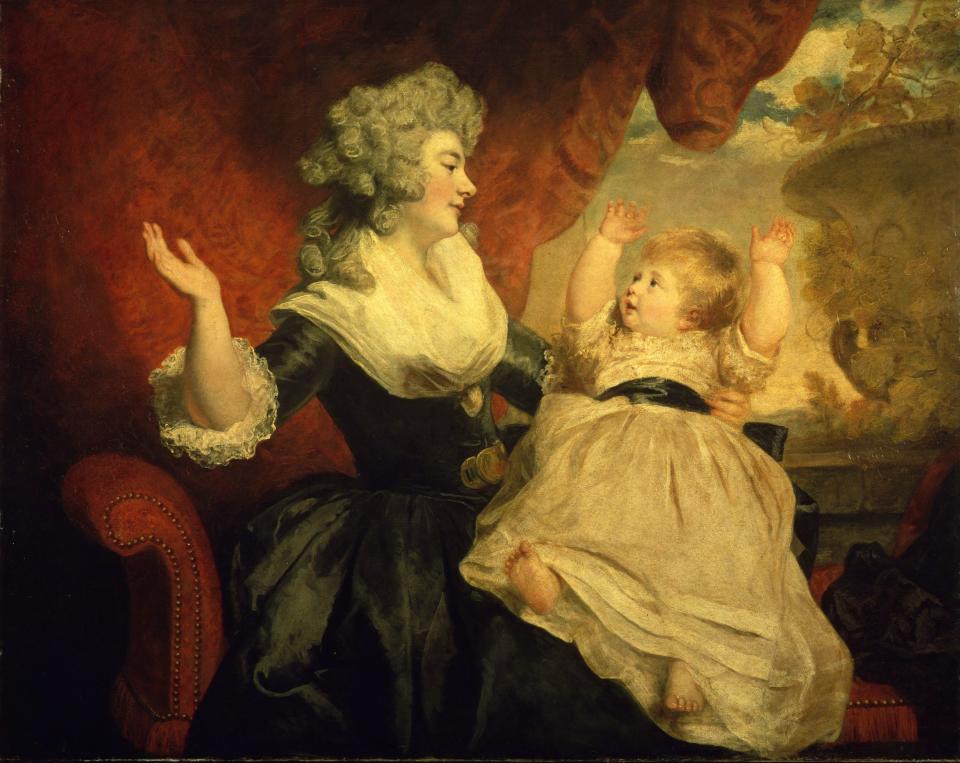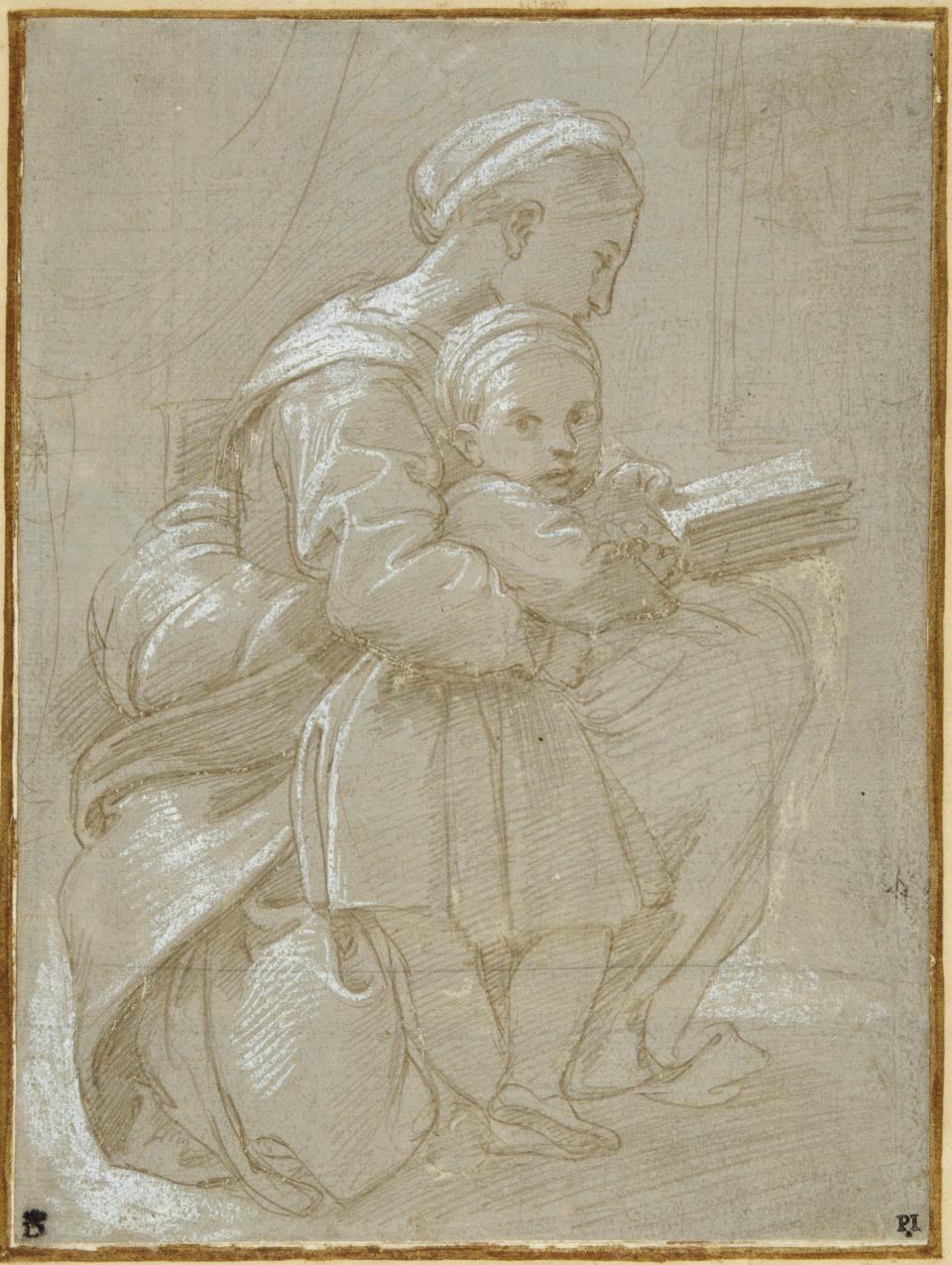The nice thing about drawing children is that they are always moving. Even when they’re told to stand still in one spot, they’re constantly fidgeting – and hoping for anything else can leave you very frustrated.
My father’s patience was thoroughly tested when, as a young art teacher, he made portraits of his daughters. Even now I can remember him painting me. I was maybe four, and I was trying my best to stay very, very still, unnaturally – you can see it in my posture and my rigid expression. I was determined not to cause any shock, because when my older sister had sat for her portrait she had been unable to contain her liveliness, and my father had become so frustrated that he had blurred her face. wipe it out and leave the whole place.
I have my childhood portrait framed on the wall. It is a beautiful painting and it certainly has something of me, but above all it shows a child trying to do well.
A new exhibition at Chatsworth, Picturing Childhood, draws on five centuries of paintings of children, by artists including Raphael, Anthony van Dyck and Lucian Freud. I like to think that these painters, some from so long ago, may have shared my father’s frustration – just as their subjects may have shared mine.
Almost all of these works of art would have been a commission, serving to document a family or introduce an heir, so it should come as no surprise that they can feel quite staged. Many of the paintings depict children standing with their parents, or sitting decoratively – as in the exquisite portrait of William Brooke, 10th Lord Cobham, and his family, painted in 1572. Yet this picture also conveys real affection: the children gently hold animals and fruit, the smallest one sits on his aunt’s lap.


Sometimes the children pose as if they are playing or running, but even then they often look a bit stiff or self-conscious – like five-year-old Henry Boyle, all dressed in a golden tunic like ‘The Boy of Egremont’ (a medieval story told in later centuries turned out to be a favorite of painters). I recognize Henry’s expression as he looks at me from this 17th century portrait. I’ve seen it on many a child’s face and to me it says, “When can I stop doing this?”
As an illustrator of children’s books, I often draw the little ones, although my characters come from the imagination: from memories, photos and sketches. My invented children, Charlie and Lola, and Clarice Bean, never have to sit still. And so when I draw, I start from the inside out: I wonder what motivates this specific child. How do they think? What do they feel? How do I explain their personality in photos? I’m here to tell you what isn’t told in words, to go beyond the surface and bring out the emotion of each character.
My Charlie and Lola books are essentially conversations between a seven-year-old brother and his three-year-old sister – the affection they have for each other is evident in the illustrations. The books explore the way children use their imagination to solve problems. Clarice Bean is a very different kind of child: talkative, energetic and full of observations. We look at the world through her eyes – what we see in my drawings is her impression of things.


I have always enjoyed observing children. Their interactions are so different from those of adults, their expressions are not yet guarded by experience. Whether it’s nervously tugging at the hem of a sleeve or furiously scraping a shoe against the ground, their movements so often tell us what they’re thinking.
Illustration is a more abstract art than portrait art. With a commissioned portrait, the story is controlled, so at first glance the child you see is the child the parents want you to see: beautiful, affectionate, even-tempered and well-behaved. They put on a show and it feels posed. However, when I look at Joshua Reynolds’s 1784 portrait of Georgiana Spencer, Duchess of Devonshire, and her infant daughter, it is the baby who looks the most alive. Perhaps the artist had to accept that such a small child could not be posed, and perhaps he was fascinated by the liveliness of this little girl. She stares intensely at her mother’s face, delighted by the pat-a-cake game they are playing – while poor Georgiana has the blank expression of someone who is very much looking forward to putting her arm down.
This painting, from 240 years ago, gives us a glimpse of the energy that children radiate – something illustrator Quentin Blake has always managed to translate into ink, pencil and paint, bringing all the whining about children to life. You feel his joy in it. Children are also openly curious, which can be quite disarming. Raphael noted this perfectly in his drawing Woman Reading with a Child (1512), shown at Chatsworth. A mother (perhaps) pulls a small child next to her as she reads, and the child looks directly out of the frame toward us, holding our gaze as if we are the artist and she is intrigued by what we are doing. There is something completely childish about her appearance.


The Flemish painter Cornelis de Vos was greatly admired in the 17th century for his skill in capturing the likeness of children. One of his most famous works is a portrait of his own daughter Magdalena. Painted in 1623, it is one of Chatsworth’s treasures and the inspiration for this exhibition. This little girl looks at us with confidence – I imagine she’s about to laugh. She certainly looks pleased, and why wouldn’t she be, beautifully dressed in an embroidered orange-red dress with a lush lace collar. She could be any child today, dressed in an expensive Disney princess costume.
I find expressions like those of Magdalena the most moving. They connect us through time to our own childhood. That’s why I love listening to children chatting and playing – they remind us that we were all like that once. I especially love those furtive sideways glances a child gives. You can see it in the faces of my own characters. I guess I probably learned it from Charles Schulz and his drawings of Charlie Brown. (Schulz is a master of these little expressions that mean so much.)
Not all of my characters are illustrated like Charlie and Lola, with their big eyes and simplified facial features. Sometimes I’ve taken a more classic approach, like in the illustrated edition of Mary Poppins I made a few years ago, where the bodies are rounder and the faces have more detail and realism. But it is not the proportions of the characters that determine whether they are believable.


I would argue that John Burningham’s illustrations of children, in stories like Avocado Baby (1982), with their sketchy lines and scratchy colored pencil, explain a child’s movements and moods as beautifully as EH Shepard’s elegantly drawn figures for Winnie the Whew. (1926).
Such truth comes from observation, such as understanding the easy way a baby sits, firmly planted with legs extended, a position we must relearn and practice as we grow into adulthood. Toddlers kneel with their feet underneath more often, and seem to be able to do this for as long as they want. Finding a child usually still means that it is sleeping; Sleep seems to be very different for a child than for an adult – more deserted, somehow, more confident. You see it in the beautiful painting Baby on a Green Sofa (1961) by Lucian Freud. It has such a personality, this photo, both that of the artist and that of the child. You feel the solidity of the child, imagine what it would be like to pick him up, the weight of his head against your arm – I’m sure he wouldn’t wake up. This portrait is about paint and abstraction, shape and color. It is about the hand of the artist, but also tells the truth about a sleeping baby.
Most of the works of art in Picturing Childhood are portraits from a bygone era. Some are very successful works of art, some are great, some are beautiful and some are intriguing; most talk about wealth and status. The children sitting in front of these large paintings are often expertly drawn, yet not completely visible. They are somewhat idealized visions of childhood. And there are few portraits of children from poor families, because no one paid for them. Those children are invisible. So look at these works with curiosity and if you really look, they may reveal more than perhaps was intended.
Childhood is in Chatsworth, Derbyshire (chatsworth.org), today-October 6; Clarice Bean: Smile by Lauren Child (HarperCollins, £14.99) out March 28